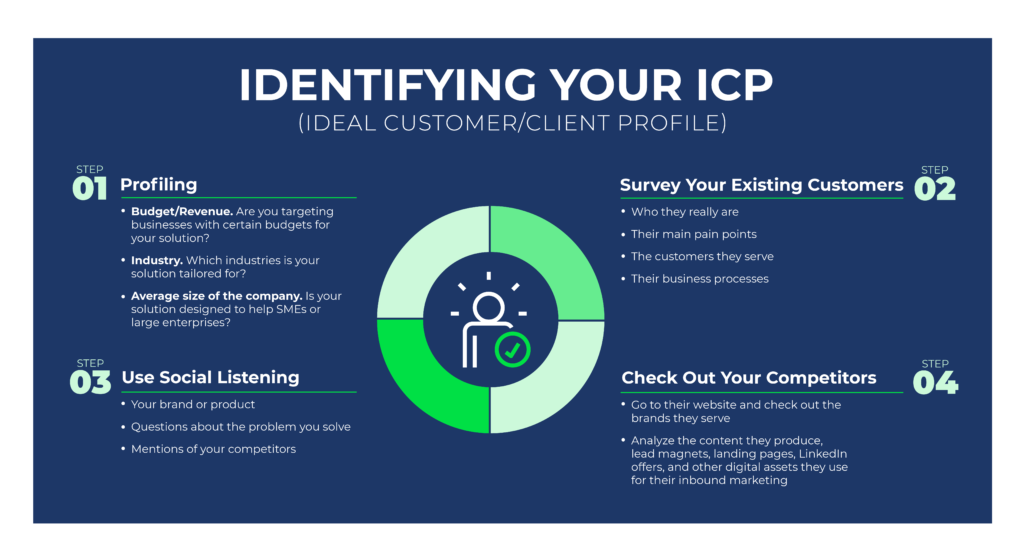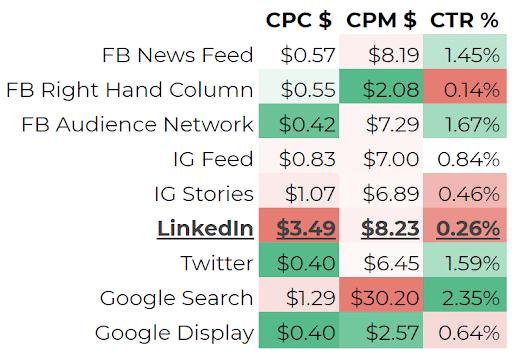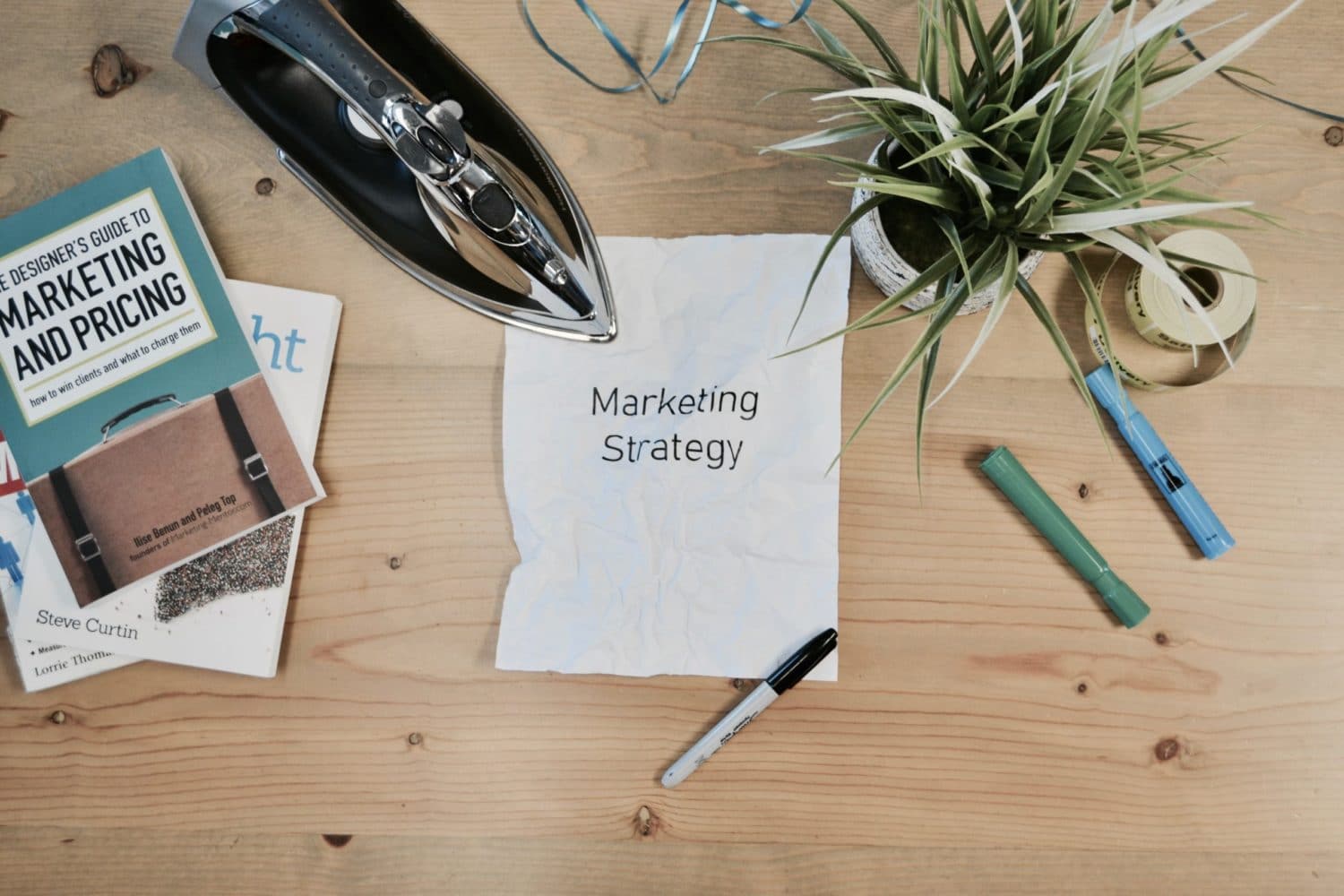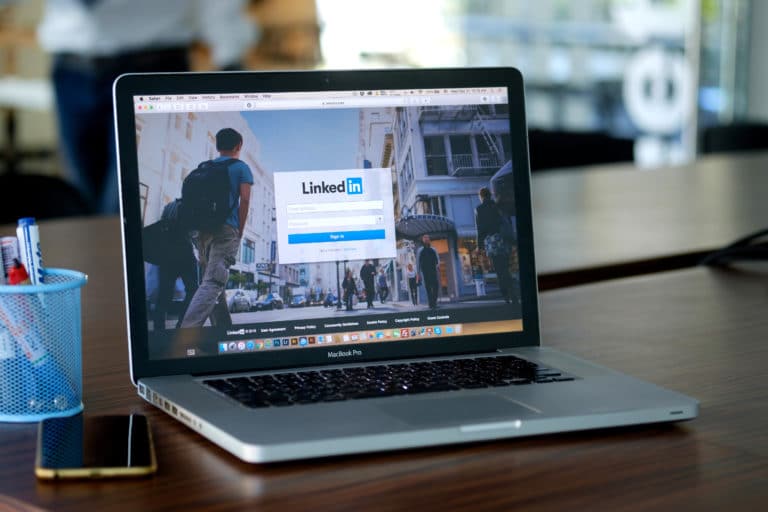By now, you’ve heard of or seen LinkedIn marketing at work. Chances are you’ve had direct experiences with it on the receiving end, that range from positive to negative; from helpful to cringe.
The positives might be, “Huh, that’s a cool ad. I’ll download that thing” or “That’s awesome, I love that my friend Emily is sharing interesting stuff like this at her new job”.
One negative we hear from companies is, “Why is this annoying type of post showing up in my LinkedIn feed? This is dreck”; and from the marketers, we hear a great deal of lament over the supposedly high cost of LinkedIn advertising relative to Facebook. “Prohibitively expensive” is the term we hear quite often.
But what’s underneath all of this is an undercurrent of excitement and opportunity: LinkedIn is one of the best places for B2B professionals to network, market, and develop their businesses and reputations. If you sell to businesses – and even sometimes to high net worth consumers – LinkedIn belongs in your strategy.
With that in mind, let’s go over a few of the basics.
Why B2B Brands Should Use LinkedIn
Before we proceed, let’s quickly look at the reasons B2B brands should use LinkedIn as one of their marketing channels.
With over 774 million users, LinkedIn is one platform you can’t ignore as a B2B marketer.
The best part?
Most of the users are on the platform to network professionally. This makes it the best social media platform to market your product. It’s also an excellent platform for running inbound B2B LinkedIn marketing campaigns. Other reasons every B2B marketer should leverage LinkedIn include:
- Precise targeting. Thanks to the powerful data analytics engine, you can create campaigns targeted at your ideal customers. This will help your sales team closemore deals.
- Right context. Being a professional platform, LinkedIn provides the perfect context for B2B campaigns.
- Excellent for professional networking. LinkedIn provides the perfect platform to engage with other brands and professionals for the purpose of achieving business goals.
Now that you know why LinkedIn must be a priority platform for running B2B digital marketing campaigns, let’s get to how you can do that.
Identifying Your ICP (Ideal Customer/Client Profile)
To design effective Linkedin B2B marketing strategies, you need to know the brands to target. You mustidentify your ideal customer/client profile (ICP). This is a picture of the business that will benefit the most from your solution. Identifying your ICP is essential to your strategy as it helps you know the accounts to target. It also helps you create personalized content that resonates with your target audience.
How do you identify your ICP?
A few factors to consider as you identify your ICP include:
Profiling
The first step to identifying your ICP is to create a profile of what your ideal customer looks like. A few factors to consider here include:
- Budget/Revenue. Are you targeting businesses with certain budgets for your solution?
- Industry. Which industries is your solution tailored for?
- Average size of the company. Is your solution designed to help SMEs or large enterprises?
Creating a hypothetical profile of your ideal customer is a great way to understand who to target. While these are just “rough sketches”, you can refine them by conducting more research.
Survey Your Existing Customers
Surveying your current customers is an excellent way of getting to know who your ICP is. Your existing customers will give you insight into:
- Who they really are
- Their main pain points
- The customers they serve
- Their business processes
This is important data that will help you build a better picture of what your ICP should look like and how best you can position yourself to attract them. You might think you know someone just by knowing their title, BUT, it’s critical to get to know them. Learn why they chose you; what makes them different.
Use Social Listening
Another simple way of identifying your ICP is through social listening. This simply means monitoring social media and the web for conversations related to the solution you provide.
Thankfully, you don’t have to go far to get this data as you can get it from your social media analytics tool. However, there are some specialized tools you can also use to get more refined insights. Examples include Brand24, Brand Mentions, and BuzzSumo among others.
What kind of conversations should you be on the lookout for?
Monitor conversations around:
- Your brand or product
- Questions about the problem you solve
- Mentions of your competitors
Finding these conversations will lead you to the brands that are most likely to do business with you.
Check Out Your Competitors
One of the easiest ways to identify your ICP is to ask those who’ve already done it — your competitors. No, they just won’t hand you valuable data on a silver platter. But you can spy on them to see the type of businesses they target, attract, and engage.

A simple way to spy on your competitors is to go to their website and check out the brands they serve. You can go a step further by analyzing the content they produce, lead magnets, landing pages, LinkedIn offers, and other digital assets they use for their inbound marketing. This will help you get a better picture of the kind of businesses they’re after.
Besides checking out your competitor’s website, you can also use some competitor analysis tools. A few examples include SpyFu, SEMrush, and Alexa among others. You can also use LinkedIn’s search engine to search keywords your target audience are most likely to be associated with.
How To Perfect Your Profile Page
An integral part of any B2B LinkedIn marketing strategy is your profile page. It’s the first port of call for your ICPs and must, as such, be optimized for visibility and conversions.
Company Page vs. Personal Profile
When it comes to B2B Linkedin marketing, the platform offers you two avenues to use. The first is your company page and the second is your personal profile. And while a company page is a must, you must focus your attention on your personal profile. Here are a few reasons why your personal profile is more effective than your company’s LinkedIn page:
People Prefer Other People
When it comes to interacting on social media, people prefer to interact with other people, not companies. That’s why you must use your personal profile to build your network on LinkedIn. Remember, even though your target audience is B2B buyers, they’re still people and are looking for a human touch in their interactions.
Company Pages are Limited
LinkedIn company pages are static and rely on organic interactions. You can only use them for one-way broadcasting. Personal profiles, on the other hand, are active and can be used for two-way interactions with your target audience.
Personal Profiles are More Visible
There’s nothing much you can do to make your company page sparkle other than an image and the description. Your personal page, on the other hand, is versatile. You can add:
- Videos
- PDFs,
- Powerpoint presentations
You can also publish articles with LinkedIn Pulse and share them with your network.
These, and more, are the reasons your personal page is more effective at lead generation. With that being said, how do you optimize your profile?
- Profile image. This is the first thing people will notice so make sure it shines. To do this, make sure your face makes up about 60% of the picture and that you’re smiling. Never use long-distance shots.
- Banner image. Banner images are the background image at the top of your profile. This is precious real estate you can use to communicate visually with your target audience.
- Title/headline. This comes directly under your profile image. Despite the limited number of characters, use it to describe who you are and what you do.
- Description. Your description is a continuation of your headline. Use it to tell your story in a way that speaks to your target audience. Include a CTA at the bottom to spur your prospects into action.
- Add in important links. Let people find more information about you and your brand by including relevant links in your profile.
- Manage your endorsements. As more people connect and work with you, they’ll start leaving endorsements. Manage them in such a way that they are skewed more to your area of specialty.
- Use Keywords as much as possible. From your headline to your description to the content you publish, make sure to include your main keywords.
Optimizing your LinkedIn is essential to ensuring your profile appears in search results and stands out. After all, this is critical to ensuring your LinkedIn B2B marketing strategy bears fruit.
With those fundamental considerations and implementations in mind, here are some of the main LinkedIn techniques and how they each might fit into your strategy.
Use These 4 Powerful LinkedIn B2B Marketing Strategies
Paid Advertising
This is the first thing that comes to mind for most people. After all, it’s one of LinkedIn’s three main moneymakers, second to their Talent Solutions business which comprises about ⅔ of its revenue. (LinkedIn sells about as much to Marketing leaders as it does to Salespeople, as a percentage of revenue contribution.)
If you look at the trends in LinkedIn marketing and advertising costs, you’ll see that LinkedIn still looks quantitatively very expensive on a per-lead basis compared to most other channels:

Is LinkedIn Your Best Ad Channel?
Now, of course, LinkedIn may simply be a better channel than others for your specific use case: or the advertising benefits may not be worth the added costs, for you. It depends on where your audience spends more of their time, which will be proven right or wrong in the data that emerges from your experimentation.
What you should be asking yourself when it comes to LinkedIn ads is the following:
- Does my audience primarily engage on LinkedIn, but not on other social media channels?
- How much reach do we have on Facebook, Google, Twitter, Reddit, Instagram, and other channels?
- Does our product’s average sales price merit the extra level of spend on LinkedIn advertising?
If the blended answer to the above questions amounts to an overall “Yes”, then you should consider including LinkedIn ads in your digital marketing portfolio.
If you aren’t sure how to weigh those factors, and/or you’ve never advertised on LinkedIn before, you’re probably better off hiring an agency to help you set this up, and perhaps run your campaigns for you, as well.
Bolster Your Content Promotion Strategy
If you write the world’s best article, and no one reads it, was it ever reallywritten? Campaign Monitordefines Content Promotion as “The process of distributing blog posts and other resources via both paid and organic channels, which may include pay-per-click advertising, influencer outreach, PR, social media, email marketing, and syndication.” In order to really amplify the reach of your content, you need to understand the purpose and goals you have for your content, which will help you determine what types of content promotion make sensefor each individual piece you’ve created.
Organic LinkedIn Posting
One of the big reasons why people log into LinkedIn is to see valuable and original content from other business professionals.
Even when people have no intention of looking for a job and they aren’t selling anything or recruiting, they are still logging in so that they can see what their network is doing.
Naturally, LinkedIn understands this and wants to encourage people to write posts, thus keeping people engaged on the platform. This increases their user metrics and, in turn, the performance of their ads.
The more active users they have, the more ads they can serve.
How Does Organic LinkedIn Content Affect the Bottom Line?
Getting leadsthrough unpaid, organic LinkedIn posting can be tough. Most people write posts that don’t do a good job of generating leads.
The idea behind using posts from your personal account to bring in business is to establish yourself as a credible expert in your field and to simultaneously increase the size of your audience to the point where you’re influencing hundreds or thousands of people every time you write.
At that point, you can almost think of the metrics of your organic posts as being similar to advertising: you have Viewers (Impressions), Engagements (Clicks), and people who contact you directly after seeing your post (Conversions).
If you’re wondering what types of posts are good examples of this, skim through this quick article with example LinkedIn postswe wrote and why they worked well.
Who Should Do Organic LinkedIn Posting?
We get it: personal account LinkedIn posting is a messy subject for a lot of big, enterprise revenue teams.
You’re probably better off looking at this as a strategy if you’re a private company on the smaller side. That way, there are fewer guidelines in place restricting personal social media use, and you probably have a closer-knit team with members who are more likely to want to post on LinkedIn about the industry and company in order to get business, to help with the overall team mission and goals.
Eventually, we hope that more revenue professionals will see LinkedIn as not just a place to log in when you’re looking for a job but rather a place to develop your professional network overall, whether you’re developing your business, reskinning your resume, or learning from and teaching your professional peers.
The service providers that have deep knowledge of how to use LinkedIn posting to drive marketing and lead generation results are few and far between. The strategy is nascent and not widely known. You’ll find hundreds of advertising agencies that are competent in LinkedIn ads, but only a small handful other than RevenueZen that understand Organic Content Marketing on LinkedIn.
Outbound Marketing (Prospecting)
Another major way that revenue teams use LinkedIn is by treating it as a prospecting channel. You might think, “this is a post about marketing – why are we talking about prospecting? That’s what salespeople do!”
There’s some truth to that, but because prospecting is a similar method to advertising in its activities and goals, it deserves a place on this list. Both ads and prospecting messages interrupt the workflow of a target customer and try to engage them for their attention when they weren’t looking for you already.
That being said, we see a far higher level of general competency at how to use LinkedIn for advertising, than for prospecting. We also see an overwhelming plethora of service providers claiming to do LinkedIn lead generation, where in reality they merely prospect badly on behalf of your profile, at enormous scale, try to muscle their way into a large volume of responses. To the untrained salesperson or marketing manager, this can look appealing.
But LinkedIn prospecting isn’t a bad idea if it’s executed properly. Done well, it can be a major revenue generator. After all, LinkedIn sells millions and millions of dollars worth of solutions to sales teams every month, to help them prospect better.
How Is LinkedIn Prospecting Different Than Other Channels?
The main key to your LinkedIn selling strategyis to understand that LinkedIn is a social network, first and foremost. While it is a professional business network, and thus you are allowed – expected! – to have commercial intent when you use the platform to connect with others, people expect you to do more than go straight for the kill (sale) when approaching them.
They want to see your profile demonstrate credibility, they want to read your posts to understand your thought process, and they want to keep the discussion of how you can help each other somewhat more open-ended than on a cold call, where time is tight and you need to get to your point extremely quickly.
Groups & Events
The last organic LinkedIn B2B strategy we’ll look at is leveraging groups and events. Here’s how to leverage the two:
LinkedIn Groups
To leverage groups, join as many relevant groups as possible. Use your ICP data to find groups your target audience spends time in. Once you’ve joined these groups, engage with others and add value to the group. This will:
- Make you more visible
- Establish you as an authority in your niche
- Opens up opportunities to connect with group members individually
Groups are an excellent place to find decision-makers at brands you’re targeting. So put in the effort to join relevant ones and add value.
LinkedIn Events
Another invaluable tool you can use to power your B2B LinkedIn marketing strategy is the events feature. You can use it to generate leads in two ways:
- Create an event. Create and market your event to your network. YOu can also use paid ads to extend your reach.
- Scrape events. Find events your ICPs are likely to be interested in and join those events. Once you’ve joined, you’re able to see who else is attending the event. Use filters to select the people you want to connect with and send them connection requests.
The key to leveraging both groups and events is to identify where your ICPs hang out. From there, it’s a matter of designing a personalized outreach strategy to connect with them.
How To Measure Campaign Success
Once your B2B LinkedIn marketing campaign is underway, the fun part starts — monitoring performance. It’s important that you track your progress as doing so will help you:
- Understand which parts of your strategy are working and which need to be improved.
- Improve your messaging to suit your audience.
- Helps you determine your ROI and customer acquisition costs(CACs).
To be able to track your performance, you must of all determine what you want to achieve with your B2B LinkedIn marketing campaign. Your goal can be anything from brand awareness to lead generation to driving engagement and anything in between. Once you’ve determined your goal, you must define the KPIs you’ll use to track your performance. Examples include:
- Number of new connections
- Impressions and views
- Engagement (likes, shares, and comments)
- Profile views
- Click count and Click-through rate
- Demographics
Tracking these KPIs is easy as you can get most of the data from LinkedIn Analytics. You can also choose to use third-party tools like Inlytics, SocialInsider, Klipfolio, and more. If you need help interpreting and using LinkedIn KPIs, you can always leverage B2B LinkedIn marketing services.
Takeaways
Once you’ve decided which LinkedIn B2B marketing strategy is the best fit for you or what mix, then it’s time to start planning. For early-stage companies or companies that need to stay lean, you’ll probably start with a mix of prospecting and organic. If you’re a larger company with a bigger budget, you might be able to start with LinkedIn ads.
Either way, the key takeaway is that you need to build a LinkedIn strategy if your market is on LinkedIn. As a B2B marketing channel, ignoring LinkedIn means ignoring the number one place where business professionals are spending their time.




